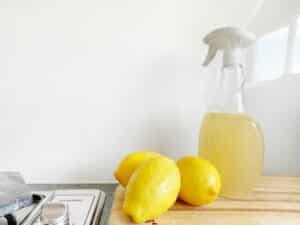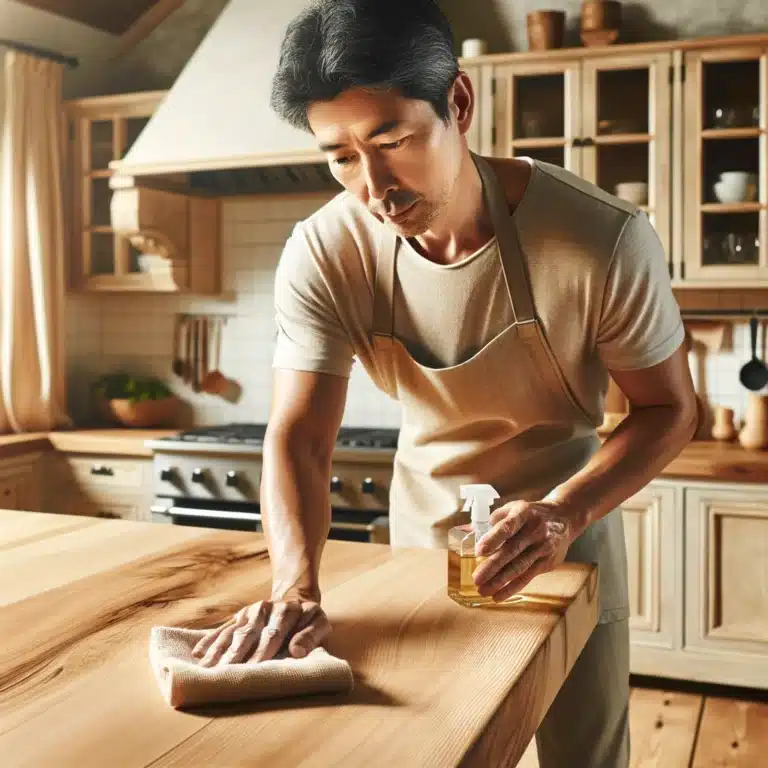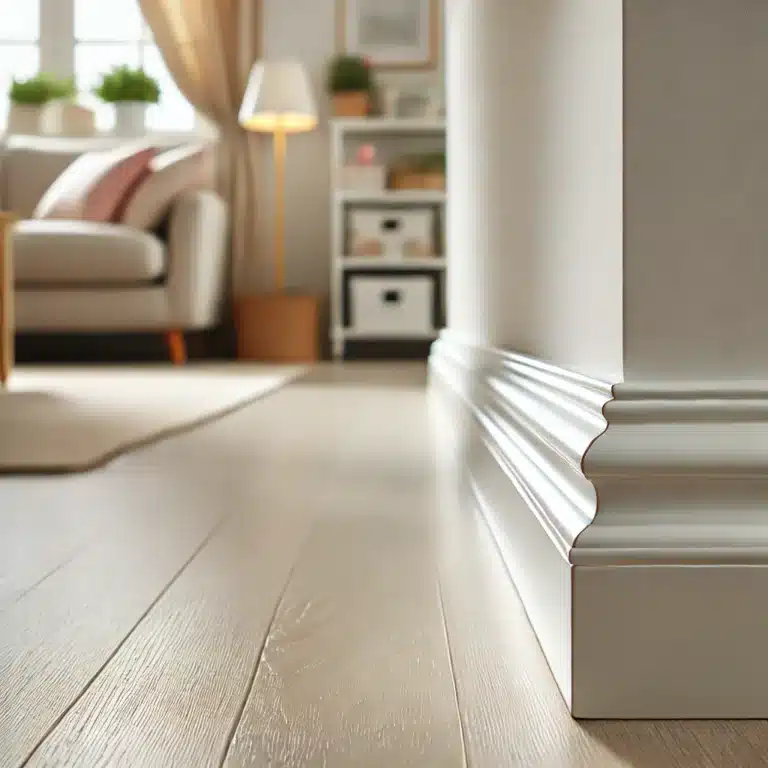Wood furniture and surfaces add warmth and elegance to any home, but keeping them in pristine condition can be a bit of a challenge. Fortunately, you don’t have to rely on harsh chemicals to keep your wood items looking their best. Here are seven natural methods to clean and polish wood that not only bring out its beauty but are also eco-friendly and gentle on your furniture.
1. Vinegar and Olive Oil Mixture
One of the most effective and gentle ways to care for your wood furniture is by using a mixture of vinegar and olive oil. This combination is not only simple to prepare but also highly effective in maintaining the luster and health of wood surfaces. The acidity of the vinegar gently cleanses the wood, removing dirt and grime without damaging the wood’s natural structure. Meanwhile, the olive oil acts as a nourishing polish, deeply conditioning the wood and enhancing its inherent shine.
To make this natural wood cleaner and polish, combine one part white vinegar with three parts olive oil in a bowl or a jar. This ratio ensures that the oil sufficiently coats and protects the wood while the vinegar keeps it clean and bright. Before applying, it’s essential to stir the mixture thoroughly to blend the ingredients well.
Using a soft, lint-free cloth, dip it into the mixture and wring out any excess liquid. Gently apply the solution to your wood furniture, always rubbing gently in the direction of the wood grain. This technique ensures that the oil penetrates evenly and prevents any cross-grain scratches that could mar the surface. After applying, take another clean cloth and buff the wood lightly to bring out a more vibrant shine and ensure that no excess oil remains on the surface.
This method is particularly beneficial for wood items that are handled frequently or exposed to the elements, as it not only cleans but also provides a protective layer that enhances the wood’s durability and appearance.

2. Lemon Juice and Olive Oil
This natural polish not only cleans effectively but also leaves a delightful, citrusy aroma that invigorates any space. Lemon juice, known for its potent cleaning properties, cuts through dirt and buildup without harsh chemicals. It’s particularly effective at tackling greasy residues that can accumulate on kitchen tables and cabinets, making it an excellent choice for areas where food is prepared.
When combined with olive oil, this mixture does more than just clean. Olive oil acts as a natural conditioner, penetrating deep into the pores of the wood to restore moisture and protect it from drying out or cracking. This is especially important for wood that may be exposed to heat or air conditioning, which can sap the moisture from wood and leave it looking dull.
To prepare this wood polish, mix one part freshly squeezed lemon juice with two parts olive oil. It’s important to use fresh lemon juice rather than bottled for the best results, as fresh lemon juice contains natural enzymes that are effective at breaking down grime. After mixing, apply the solution to a soft cloth, making sure the cloth is damp but not overly wet, which could saturate and damage the wood. Gently rub the cloth over the wood surfaces in your home, following the grain of the wood to avoid any scratches. The olive oil will nourish the wood, while the lemon juice enhances its color and sheen.
3. Beeswax Polish
Beeswax polish is an exceptional choice for maintaining and enhancing the natural beauty of wood furniture. This traditional method goes beyond mere surface cleaning to provide a protective barrier that safeguards wood against scratches, moisture, and everyday wear and tear. When beeswax is combined with a nourishing carrier oil like jojoba or coconut oil, it creates a robust polish that not only enhances the wood’s appearance but also fortifies its durability.
To prepare your own beeswax wood polish, start by sourcing natural beeswax, which can typically be found at craft stores or online. Melt the beeswax in a double boiler until it becomes liquid. Carefully blend in your choice of carrier oil—jojoba oil is especially good for its long shelf life and mimicking the natural oils found in wood, while coconut oil offers a slightly sweet fragrance and additional antibacterial properties. A good ratio to maintain is one part beeswax to three parts oil, which ensures that the mixture is easy to apply while still being rich enough to penetrate deeply into the wood.
Once the beeswax and oil have fully integrated, allow the mixture to cool slightly; it should still be warm enough to be malleable. Using a soft, lint-free cloth, work the warm polish into the wood surfaces, rubbing in circular motions to ensure that the mixture covers evenly. This method allows the wax to fill in tiny pores and scratches, creating a smooth, even surface.
After applying the beeswax polish, allow it to sit on the wood for a few minutes to ensure deep penetration. Then, with another clean, soft cloth, buff the wood to a high shine. This final buffing step not only enhances the wood’s natural luster but also helps to harden the protective wax coating, forming a durable seal that repels dust, water, and stains.
4. Tea Brewing
Tea brewing offers a surprisingly effective method for cleaning and enriching the appearance of wood furniture. The natural tannins found in black tea make it an excellent choice for gently cleansing and enhancing the natural grain of wood surfaces. These tannins, which give tea its characteristic color and astringency, also have properties that can help to lift dirt and residue without the harsh effects associated with chemical cleaners.
To use tea as a cleaning solution for wood, start by brewing a strong pot of black tea. Typically, using one or two more tea bags than you would for drinking creates the ideal concentration for cleaning. Allow the tea to steep until it’s very strong, then let it cool to room temperature to prevent any heat damage to your wood surfaces.
Once cooled, dip a soft cloth into the tea, wring it out so it’s damp but not dripping, and gently wipe down your wood furniture. The damp cloth will pick up dust and dirt, and the tannins in the tea will work to enhance the color of the wood, making it appear richer and more vibrant. This method is particularly effective for older wood pieces that may have dulled over time, as the tea can help to subtly restore their original hue.
5. Essential Oils
Integrating a few drops of essential oils like lemon or lavender into wood cleaning mixtures brings additional benefits beyond just a fresh scent. Lemon essential oil, for instance, is celebrated for its natural degreasing properties, making it an excellent choice for wood surfaces in the kitchen where grease and food particles can accumulate. Its bright, clean scent also helps to neutralize odors, leaving your wood furniture and surfaces smelling wonderfully fresh.
Lavender essential oil, on the other hand, is known for its calming and antibacterial properties. When added to wood cleaning solutions, it not only imparts a soothing fragrance but also helps to sanitize the surfaces, making it ideal for areas frequently touched, such as dining tables and chairs. The gentle nature of lavender oil makes it safe for regular use, ensuring that your wood remains clean without the risk of damage from harsh chemicals.
To incorporate essential oils into your wood care routine, simply add three to five drops of your chosen oil to any of the natural cleaning mixtures you prepare, such as the vinegar and olive oil or the beeswax blend. The oil will distribute evenly throughout the mixture, enhancing its efficacy and leaving a long-lasting, pleasant aroma.

6. Walnut Rub
The walnut rub is a remarkably simple yet effective natural remedy for minor scratches and blemishes on wood surfaces. This technique utilizes the natural oils present in walnuts, which are akin to the oils used in commercial wood polishers. When a shelled walnut is rubbed over scratches in wood, the oils gradually seep into the wood fibers, helping to blend and diminish the appearance of the scratches.
To use this method, take a fresh walnut out of its shell and gently rub it over any scratched areas on your wood furniture or floors. The key is to move the walnut along the grain of the wood, which helps to ensure that the natural oils penetrate effectively and the scratch blends seamlessly with the surrounding area. As you rub, the natural oils are released and fill in the small crevices created by the scratch, effectively smoothing out the surface and restoring the wood’s uniform appearance.
This method works best on light and medium wood tones, where the natural color of the walnut melds well with the existing wood finish. For deeper scratches, you may need to repeat the process several times to fully saturate the affected area and achieve a good match with the rest of the wood surface.
7. Coconut Oil
Coconut oil serves as an excellent natural conditioner for wood that appears dry or has lost its luster due to environmental factors such as air conditioning or heating. These conditions often sap moisture from wood, leaving it looking dull and lifeless. By applying coconut oil, you can reintroduce essential moisture back into the wood, helping to restore its natural shine and vitality.
To effectively use coconut oil on your wood surfaces, start by ensuring the wood is clean and free of dust. Then, take a small amount of coconut oil—solid at room temperature but easily melted in the warmth of your hands—and apply it to a soft, clean cloth. Rub the oil gently into the wood, working in the direction of the grain to ensure an even application. The oil will penetrate the wood, nourishing it deeply and replenishing lost moisture.
After you’ve applied a thin layer of coconut oil, use a separate clean, soft cloth to buff the surface. This step helps to remove any excess oil and polishes the wood to a natural, healthy shine. The result is not just aesthetically pleasing; the coconut oil also forms a protective barrier that helps shield the wood from future drying, enhancing its durability and appearance over time.
This method is especially beneficial for wood furniture or floors in parts of the home where dry air circulates, such as near heating units or in air-conditioned rooms. Regular treatment with coconut oil can keep your wood surfaces looking vibrant and well-maintained, adding to the overall warmth and beauty of your home.
Cleaning Wood With Natural Cleaners
Using natural methods to clean and polish wood is not only beneficial for maintaining the aesthetic appeal of your furnishings but also ensures the health and safety of your household environment. By employing ingredients like vinegar, olive oil, beeswax, and coconut oil, you can avoid the harsh chemicals found in many commercial cleaning products. These natural solutions are gentle on wood surfaces, helping to extend their lifespan while preserving their natural beauty. Additionally, these methods are environmentally friendly, supporting a sustainable lifestyle by minimizing the use of toxic substances.
Moreover, these eco-friendly alternatives do not compromise on effectiveness. They provide a safe and potent means to revive and protect wood furniture and floors, enhancing their durability against daily wear and tear. Regular use of these natural cleaning techniques can keep your wood surfaces looking as good as new, enriching the overall warmth and charm of your home. The added benefit of these methods is the peace of mind that comes from knowing your cleaning routine is safe for your family and pets.
For those interested in even more eco-friendly cleaning solutions and tips for maintaining a pristine home, Toronto Shine Cleaning offers a range of services tailored to meet your needs. Specializing in environmentally responsible cleaning practices, Toronto Shine Cleaning can help ensure that every corner of your home sparkles without the use of harmful chemicals. Whether you need regular cleaning services or a deep clean, check out what Toronto Shine Cleaning can offer to keep your living space clean, healthy, and beautifully maintained. For more information on their services, visit Toronto Shine Cleaning’s website.




















